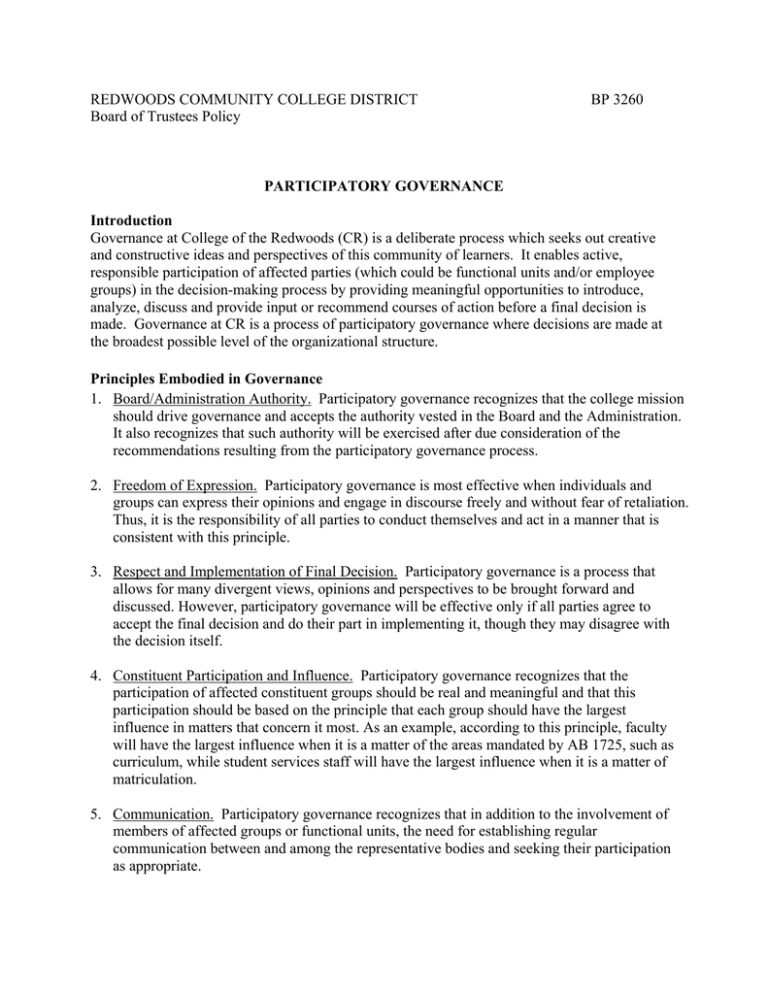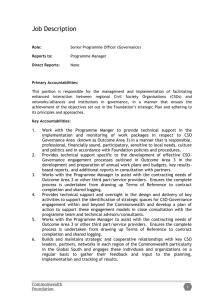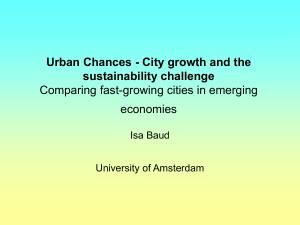REDWOODS COMMUNITY COLLEGE DISTRICT BP 3260
advertisement

REDWOODS COMMUNITY COLLEGE DISTRICT Board of Trustees Policy BP 3260 PARTICIPATORY GOVERNANCE Introduction Governance at College of the Redwoods (CR) is a deliberate process which seeks out creative and constructive ideas and perspectives of this community of learners. It enables active, responsible participation of affected parties (which could be functional units and/or employee groups) in the decision-making process by providing meaningful opportunities to introduce, analyze, discuss and provide input or recommend courses of action before a final decision is made. Governance at CR is a process of participatory governance where decisions are made at the broadest possible level of the organizational structure. Principles Embodied in Governance 1. Board/Administration Authority. Participatory governance recognizes that the college mission should drive governance and accepts the authority vested in the Board and the Administration. It also recognizes that such authority will be exercised after due consideration of the recommendations resulting from the participatory governance process. 2. Freedom of Expression. Participatory governance is most effective when individuals and groups can express their opinions and engage in discourse freely and without fear of retaliation. Thus, it is the responsibility of all parties to conduct themselves and act in a manner that is consistent with this principle. 3. Respect and Implementation of Final Decision. Participatory governance is a process that allows for many divergent views, opinions and perspectives to be brought forward and discussed. However, participatory governance will be effective only if all parties agree to accept the final decision and do their part in implementing it, though they may disagree with the decision itself. 4. Constituent Participation and Influence. Participatory governance recognizes that the participation of affected constituent groups should be real and meaningful and that this participation should be based on the principle that each group should have the largest influence in matters that concern it most. As an example, according to this principle, faculty will have the largest influence when it is a matter of the areas mandated by AB 1725, such as curriculum, while student services staff will have the largest influence when it is a matter of matriculation. 5. Communication. Participatory governance recognizes that in addition to the involvement of members of affected groups or functional units, the need for establishing regular communication between and among the representative bodies and seeking their participation as appropriate. 6. Formal and Informal Processes. Participatory governance recognizes that governance involves implementation of an organized system of policies, procedures, guidelines and practices. It is recognized that the deliberate and formal process of participatory governance is appropriate for the first two while informal and collegial consultation is appropriate for the latter two. 7. Hiring and Evaluation of Administrators. Participatory governance recognizes the necessity and importance of participation of involved parties in the initial selection of supervisors and administrators and subsequently in providing feedback in the evaluation process of supervisors and administrators. 8. Decision Making. Participatory governance is most effective when decision-making is distributed throughout the organization so that decisions can be made at the broadest level of the organizational structure and when roles, responsibilities and decision-making authority of functional units and committees are clearly delineated. 9. Exceptions to Shared Governance. Participatory governance recognizes that while there is the presumption that the administration will abide by the advice and recommendation of the constituents there will be instances where it may choose to disregard such advice or recommendation. In such cases it is incumbent upon the administration, upon written request, to provide a written rationale for the decision within ten working days. It also recognizes that, in exceptional circumstances, it may become necessary to take action affecting institutional constituencies without the full benefit from the shared governance process. In such cases, the representative bodies will be informed as soon as possible and will have opportunities to provide feedback. 10. Self-Assessment/Feedback. Participatory governance requires periodic assessment of the process itself. It is expected that the process will be evaluated at least once a year with the express objective of making it better. 11. Decisions Not Requiring Participatory Governance. Participatory governance recognizes that there are many administrative decisions made in CR that do not fall under the purview of this process—for example, developing the facilities master plan is a matter of participatory governance while implementing the plan is not. 12. Timelines. Effective participatory governance requires that constituents and functional units adopt processes and practices that allow for decision-making in a timely manner. Reference: Education Code Section 70902(b)(7); Title 5, Sections 53200 et seq., (Academic Senate), 51023.5 (staff), 51023.7 (students); Accreditation Standard IV.A Adopted by Board of Trustees: 12/06/2011



